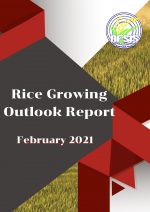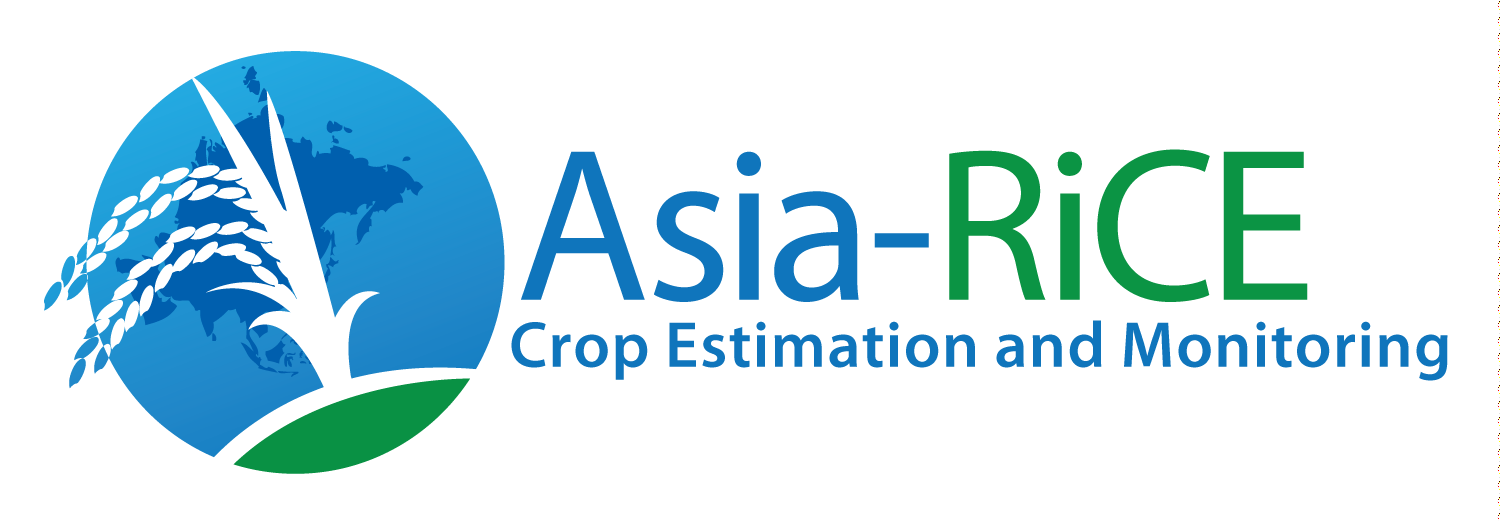Asia-RiCE is the work of an ad hoc team of stakeholders with an interest in the development of an Asian Rice Crop Estimation & Monitoring (Asia-RiCE) component for the GEO Global Agricultural Monitoring (GEOGLAM) initiative.

Asia-RiCE 2024 Implementation Report
This report summarises the activities and achievements of Asia-RiCE in 2024. This document also aims to acknowledge and highlight the impact of contributions from data providers, and the role of the Asia-RiCE initiative in facilitating these inputs.

Asia-RiCE Work Plan
This 2025 update of the Asia-RiCE Work Plan has been prepared to reflect the latest status of Asia-RiCE.

Rice Growing Outlooks
Asia-RiCE members contribute to the monthly AFSIS Rice Growing Outlooks (RGOs), which support food security by publishing reports covering rice growing conditions and yield prospects, as well as implementing training sessions to enhance the use of space technologies.

Importance
Rice is the staple food for more than half of humanity – with 90% of the world crop grown and consumed in Asia
World population, and therefore demand for food, has increased linearly over the last fifty years (+80M/year), and is projected to keep growing until around 2050 up to 9 billion inhabitants (United Nations Department of Economic and Social Affairs, Population Division 2004). This conjuncture is prone to create tensions in food markets that could lead to world food price crises, as in 2008 when the price of rice more than doubled in only seven months. In this context of price instability and threatened food security, tools to monitor rice production in real-time are highly needed by governments, traders and decision makers.
Accurate information is needed on the spatial distribution of rice fields, water resource management, risk occurrence and annual production projections. However, most agricultural surveys rely mainly on statistics based on limited ground samplings at which data are extrapolated on a national scale. Although the census can provide statistical estimates, slow and unsystematic collection of data can limit the ability to make timely decisions.
Moreover, rice agriculture is strongly linked to environmental issues, from water management to climate change. For these reasons, long term inter-annual monitoring is also required in order to study the production and cultural impacts of these factors. Satellite remote sensing can support this long term monitoring requirement at regional and global scales.
Asia-RiCE Objectives
Asia-RiCE describes a work plan for the rice component of GEOGLAM
The objectives are:
- To ensure that Asian countries receive the full potential benefits of GEOGLAM, and that they are suitably engaged and prepared to do so;
- To ensure that rice crop monitoring issues are given suitable priority and attention within the scope of the full GEOGLAM initiative, including in the development of the observing requirements; and
- To establish a framework for the coordination necessary to engage, manage and support the various stakeholders.
- The regional activities suggested by the Asia-RiCE Work Plan will be consistent with and undertaken within the broader GEOGLAM Work Plan and there will be a number of interdependencies and interchanges between the two Plans.
Capacity Development
Asia-RiCE promotes the GEOGLAM Guidance Document On Good Practices For Designing, Implementing, And Evaluating Capacity Development Interventions In GEOGLAM. This comprehensive guidance document provides valuable insights and strategies for capacity development interventions.

